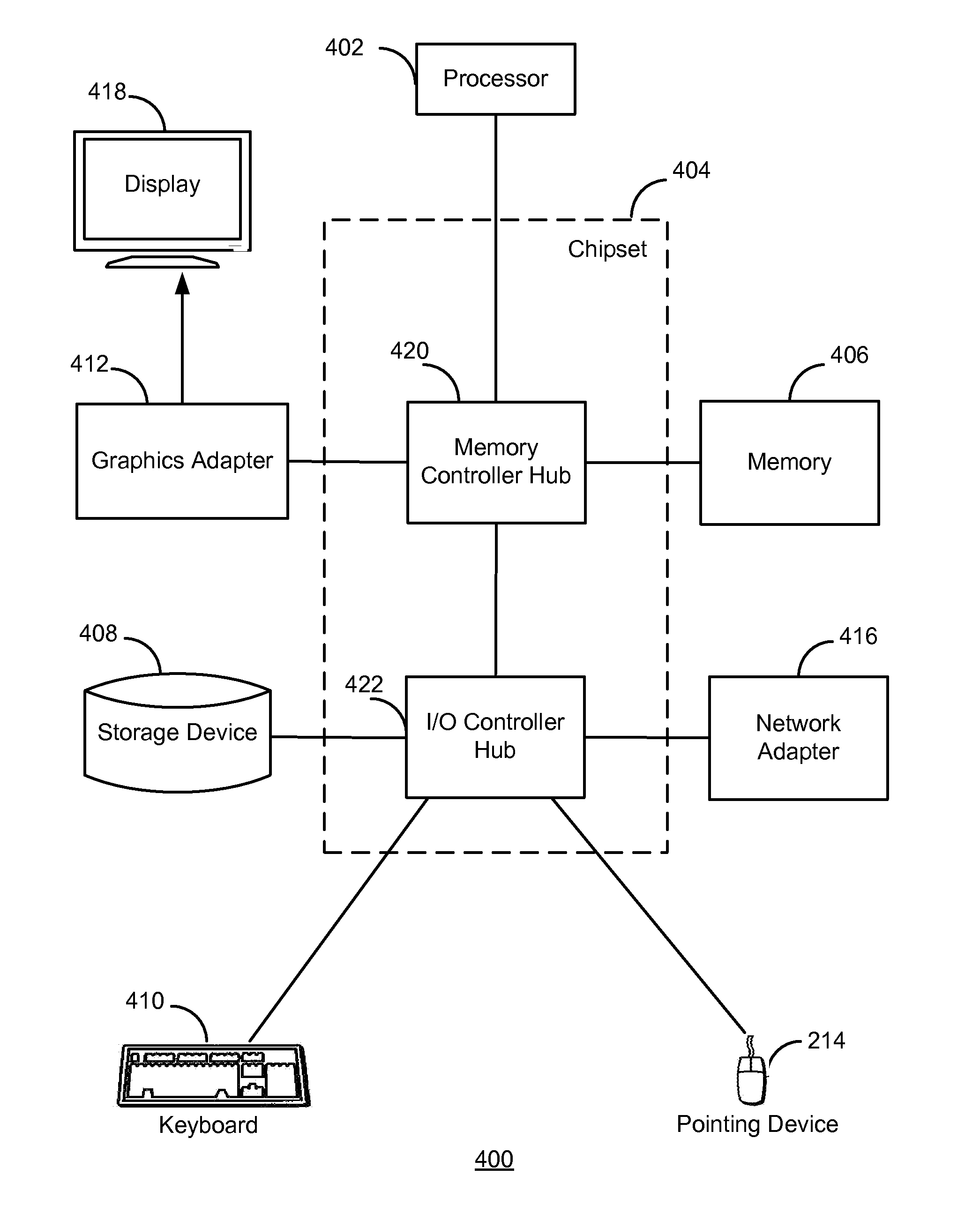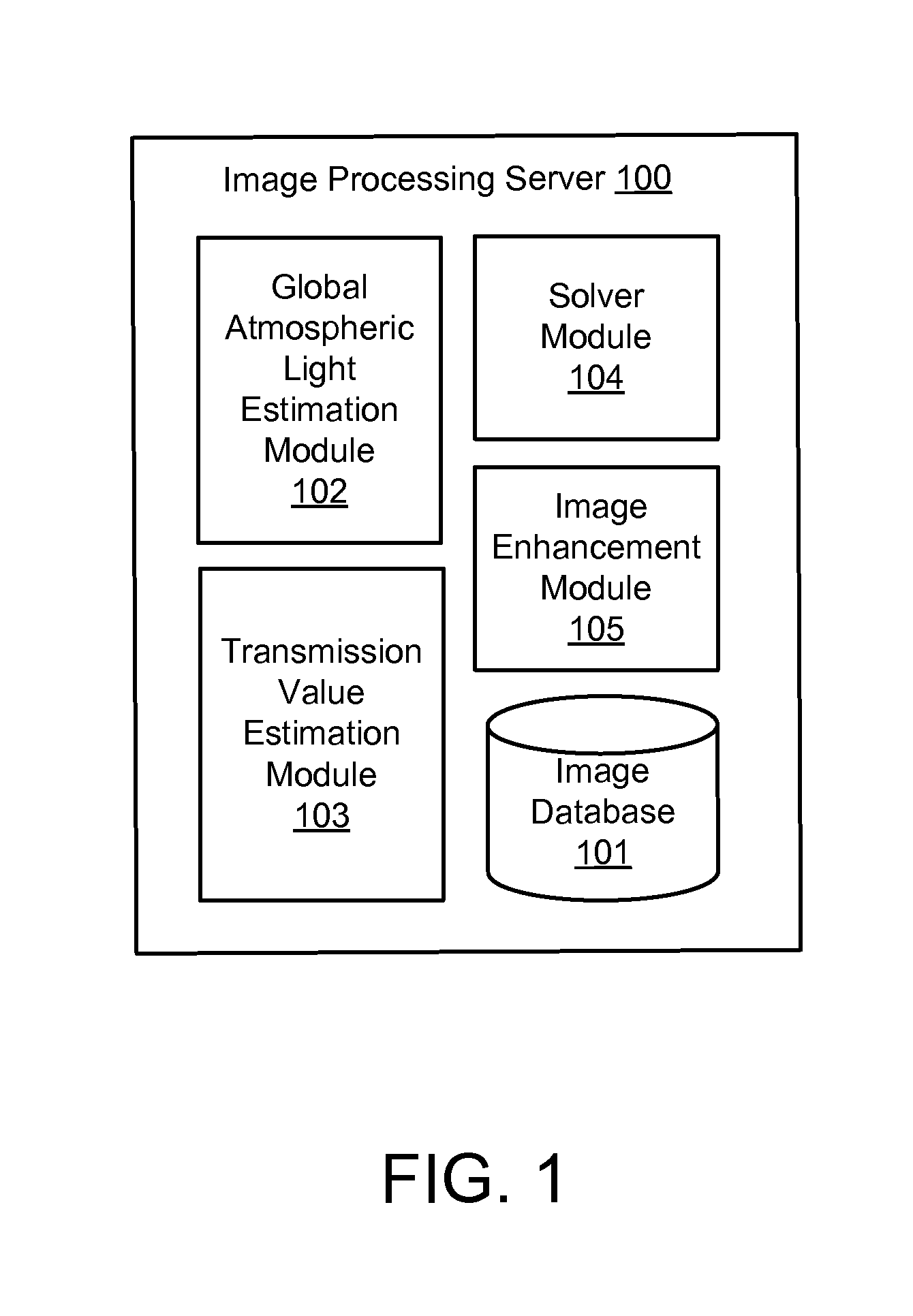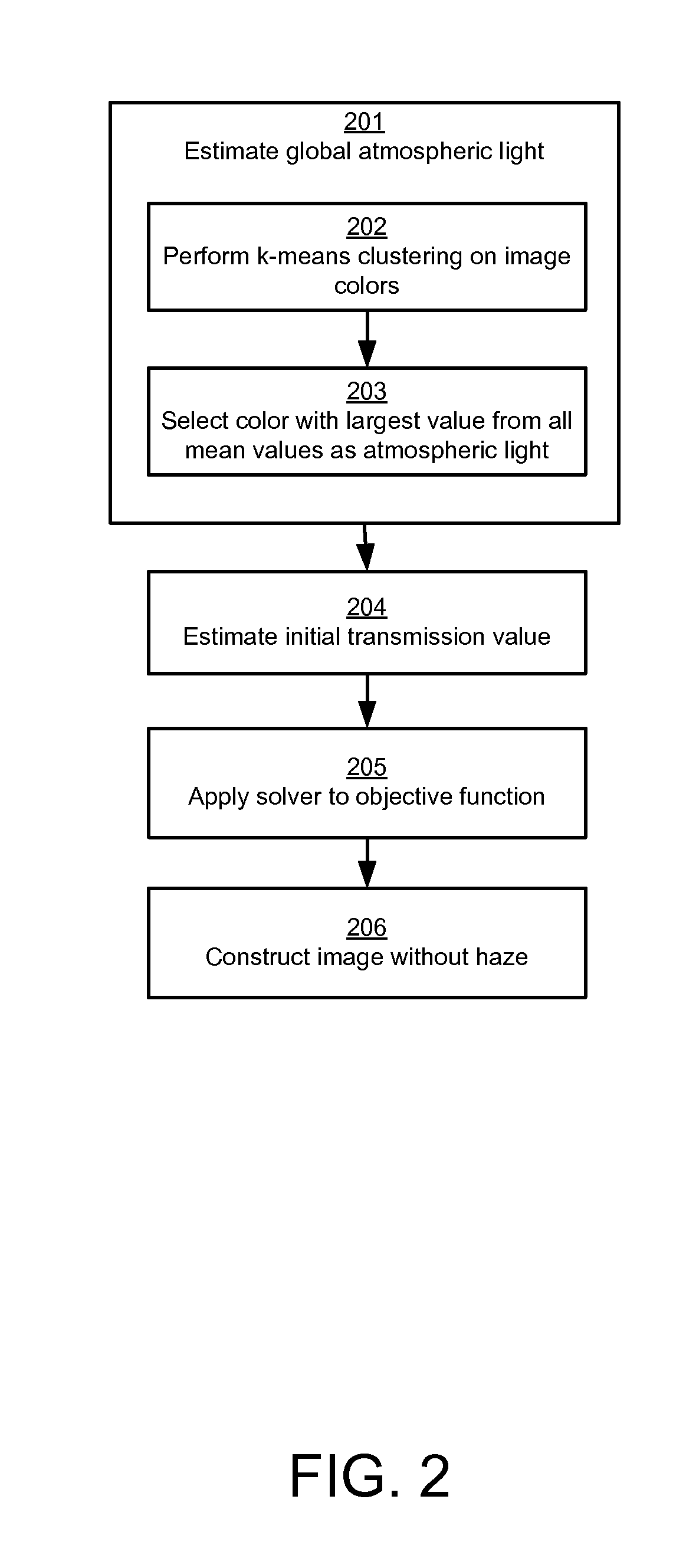Image De-Hazing by Solving Transmission Value
a transmission value and image technology, applied in image enhancement, image analysis, instruments, etc., can solve the problems of degrading the content of the resulting image, requiring a large amount of computational resources, and typically taking 10 seconds to complete techniques, so as to achieve computationally fast image de-hazing
- Summary
- Abstract
- Description
- Claims
- Application Information
AI Technical Summary
Benefits of technology
Problems solved by technology
Method used
Image
Examples
Embodiment Construction
Overview
[0015]Embodiments of the invention remove haze from images of scenes that are affected by haze. The amount of haze affecting the color of individual pixels of the image may vary across the image. For example, pixels from objects in the foreground of an image may have little haze while pixels from objects at a significantly further distance from the camera may have more haze. Thus, it is desirable to model the amount of haze in an image on a pixel by pixel basis. Two neighboring areas in an image with similar underlying appearance (e.g., color of the underlying surface) should exhibit a change in observed appearance (in the image) only due to a change in haze between the two neighboring areas. In this case, the change in the observed appearance between two neighboring areas should be the same as the change in haze between the two areas. Thus, embodiments of the invention use the change in appearance between pairs of areas to estimate a change in haze across those areas based ...
PUM
 Login to View More
Login to View More Abstract
Description
Claims
Application Information
 Login to View More
Login to View More - R&D
- Intellectual Property
- Life Sciences
- Materials
- Tech Scout
- Unparalleled Data Quality
- Higher Quality Content
- 60% Fewer Hallucinations
Browse by: Latest US Patents, China's latest patents, Technical Efficacy Thesaurus, Application Domain, Technology Topic, Popular Technical Reports.
© 2025 PatSnap. All rights reserved.Legal|Privacy policy|Modern Slavery Act Transparency Statement|Sitemap|About US| Contact US: help@patsnap.com



